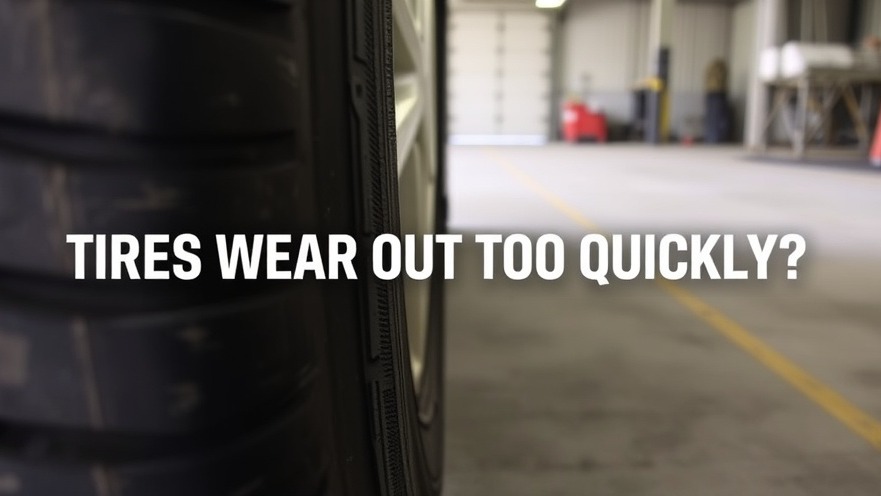
Understanding Tire Wear: The Hidden Symptoms
Tires are the unsung heroes of our vehicles, bearing the weight of every journey we undertake. However, the expense of regularly replacing tires due to irregular wear can be a major frustration for car owners. Irregular tire wear patterns could indicate underlying issues with your vehicle’s suspension or steering system. Let's delve into the signs of suspension problems and how you can address them to maintain vehicle safety and performance.
In Tire Wear + Wandering Steering on Your Car or Truck = Your Suspension Has Issues but You Can Fix 'Em, the discussion dives into identifying common suspension problems that can affect your vehicle, highlighting essential maintenance tips for car owners.
Wandering Steering: An Important Indicator
One of the most common complaints from drivers is wandering steering, where the vehicle feels unstable or drifts to one side. This can stem from worn components in the steering and suspension systems, specifically tie rod ends and wheel bearings. These small parts play a significant role in directing your vehicle, and any signs of wear can lead to uneven tire wear and the need for replacement.
A Comprehensive Check: What to Inspect
Before you head to a tire shop, consider performing a thorough inspection of your vehicle. Start by checking the tie rod ends—shake the tire from side to side at the 3 and 9 o’clock positions. Any movement indicates that the tie rod may need replacing. Next, check the tire movement at the 12 and 6 o’clock positions. This will help diagnose issues with the wheel bearings or ball joints, two more critical components in your vehicle’s suspension system.
Importance of Replacing Parts in Pairs
If you discover a problem with the inner or outer tie rod ends, it’s crucial to replace them together. Since you must remove the outer tie rod to access the inner one, replacing them simultaneously is a smart and cost-effective move. Ignoring this could result in further issues down the road, including erratic handling or a new set of tires sooner than expected.
Potential Cost Savings Through Preventive Measures
Investing in regular checks and promptly replacing worn parts not only enhances the vehicle's lifespan but can also save money long-term. Many problems are often easier—and cheaper—to address before they lead to more significant damage. For example, taking care of the steering and suspension can optimize tire performance, reducing the chances of premature tire replacement.
Fluid Leaks: What They Mean
While inspecting your steering system, keep an eye out for any fluid leaks, especially from the power steering rack. A bad seal could necessitate a replacement of the entire unit. Fluid leaks can lead to steering issues and potentially compromise safety, making it crucial to address leaks swiftly.
Time for a Road Test
After checking and replacing any problematic components, it’s essential to take your vehicle for a test drive to see how it handles. Not only does this ensure that the repairs are successful, but it’s also an excellent opportunity to assess the overall wellness of your vehicle. Ending with a visit to a local alignment shop can confirm that everything is set up correctly and help prolong your tires’ life.
In conclusion, keeping an eye on tire wear and wandering steering can aid in identifying suspension issues early on. Regular checks and timely repairs can save you money, enhance safety, and improve your vehicle's performance. Understanding your vehicle's needs is key—informed owners are empowered owners.
 Add Row
Add Row  Add
Add 




Write A Comment